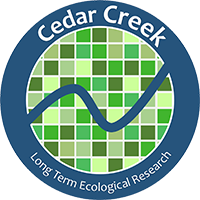The objective of this experiment is to assess biomass allocation trends in the field in relation to gradients of successional age and soil nitrogen. This objective was approached in three ways:
A) 37 old fields of various ages were surveyed for above and below ground biomass, soil N, and light penetration. Five strips (1m x 10cm) were clipped in each field for above ground biomass (sorted to grasses and forbs; then sorted to leaf and stem), and 3 root cores (down to 30cm) taken per strip (rinsed, dried and weighed). Two light measurements and one pooled (3 cores) soil N sample (for available and total N) were taken per strip.
B) 35 abundant species of known successional status were harvested from the field (usually 15 individuals per species), including roots contained in a core 20x30cm, dried, sorted to stem, leaf, and root, and weighed. These data can be combined with the old field survey results (E014) to estimate successional trends in allocation.
C) Root cores will be taken from microplots in fields A, B, C, and D, all treatments. This will be an estimate of root biomass to be combined with the above ground samples (E001) to assess root-shoot trends in response to manipulation of soil N in fields of different age.
